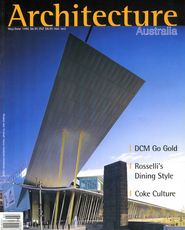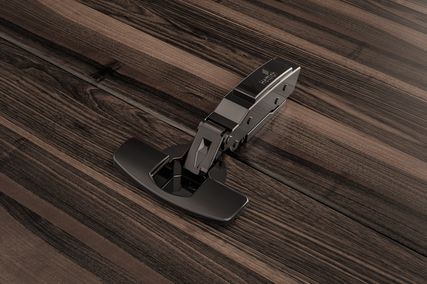Collaborating via Email
By David Week and Howard Davis
For the last four years, Professor Howard Davis, an architect now at the University of Oregon, and David Week, of Pacific Architecture in Sydney, have been collaborating on a series of housing projects in South India. All of their work offsite has been exchanged over the Net.
David Week A `killer app’ is the application that makes the whole existence of a technology worthwhile. It provides the basis for its being. The killer app for personal computing was the spreadsheet. Remember VisiCalc? The killer app for the Mac was desktop publishing.
The Internet’s killer app is email. Forget the World Wide Web. Email is what defines the core usefulness of the Net for most of its users. It’s email that makes the Net into a community, that mediates the ongoing conversation that binds the community together. The Web, in comparison, is a series of billboards.
One of the advantages of living in a big city is the possibility of meeting and working with people of like mind and like spirit. Say there are one in a thousand like you. Then in a city of 100,000, there’ll be 10 such people; in a city like Sydney—a city of three million—there will be 300 such people. The Internet gives you instant access to a community of 60 million people.
Howard Davis One of the problems of modern academic life is that some of the associations that are most important exist at long distance rather than in close proximity. This occurs because as subspecialties develop within academic fields, university departments feel the need to have representatives of a number of subspecialties within the department. People who share a specialty or subspecialty then tend to get scattered over many departments at different universities and may not communicate on a face-to-face basis every day. They can communicate at conferences, through journals, or over the Internet, and often feel that those venues are more significant than the associations they have with their most immediate colleagues.
I am always finding, particularly at conferences about interdisciplinary subjects, people who feel that they are the `lone ranger’ in their departments, doing things that their colleagues are not interested in, but who find soulmates scattered all over the place, who come together once or twice a year.
As an architecture faculty member, I work in pretty close collaboration with my colleagues and with students and spend most of my time in teaching activities of one kind or another. These associations allow me to maintain connections to the field as a whole,to the concerns of architects and architecture students, and to the general issues of design and the environment that all professionalsconcerned with buildings deal with. Indeed, this is one of the pleasures of teaching in a field such as architecture.
But at the same time, David and I share a subspecialty, of a sort, within the field of architecture, but also straddling the fields of housing, international development, design process and anthropology.We are both former associates of Christopher Alexander and have common views, and recurring arguments, based on that association. We have a lot to talk about and do together, things to talk about that I do not talk about with my proximate colleagues. Working on projects and papers with David via the Internet has essentially given me another colleague with whom I can communicate on an intimate, day-to-day basis.
David Week My first experience on the email was working together with Howard via AppleLink. AppleLink was Apple’s corporate worldwide mail system. Like many such systems, it had a gateway to the Internet, at the time still primarily an academic network, into which Howard was wired. AppleLink proved expensive, and I soon moved to direct Internet access.
Howard Davis David and I live and work 8000 miles apart. In the last four years, we have had an intense collaboration, mostly concerning the housing work that we are carrying out at Abdullapuram, near Vellore, in India; made possible by the immediate communication that the Internet offers. We have co-authored four conference papers and articles, written funding proposals, had conversations on general issues of philosophy and direction, reviewed letters, worked out management policies, shared graphic information, shared formatted documents.

House in Abdullah-puram, India;
a Net-assisted collaboration by David Week and Howard Davis.
In some cases,communication has been so urgent that we have sent texts back and forth for rewriting and editing three or four times in a day … beginning to approximate what happens when colleagues are working in adjacent offices.
David Week Another person work with extensively, at a distance, is Chris Davenport in Scotland. This collaboration extends the complexity of the documents being generated, because with Chris I am collaborating not only on design work but construction drawings as well.
One problem with collaborating via email is that it generates a very messy electronic office. I once heard a story of an academic who filed everything by putting it on top of an ever-growing pile. To find something, he’d estimate how long ago he’d filed it, guess how far down the stack that would be, and—bingo—he’d find it. That’s pretty much the record system that email will give you: hundreds of megabytes of electronic text, with only the barest structure.
Ideally, it would be nice to have a shared office on the World Wide Web: log in, and there find shared files, carefully organised, records of ongoing debates and conversations, an electronic whiteboard, post-it notes, inboxes, tools to mark-up shared documents, automatic revision controls … that’s what we’re working towards now.
David Week’s email address is .
Howard Davis is at .
|
















